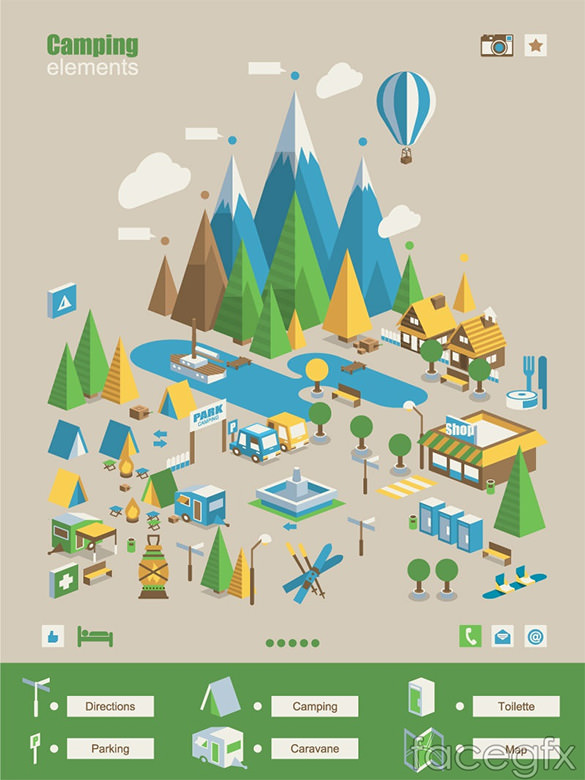As outdoor camping advanced to mirror a more comprehensive cultural shift toward mindfulness and sustainability, camping tent style followed suit. Whether it's through intuitive setup solutions or the application of Fitts' Law, modern tent layout remains to introduce and increase camper's choices for outside exploration.
The wedge outdoor tents, also referred to as a wall surface tent, can be constructed by setting up the ridgepole atop upright posts and freely staking down each side. This permits more living and moving area than an A-frame outdoor tents.
The A-Frame
One of the most famous outdoor tents designs is a standard A-frame. This framework takes its name from its roofline, which resembles the capital letter A. This shape develops a vaulted ceiling that offers an open, spacious feeling inside the home. The sloping wall surfaces additionally make second-level loft space spaces optimal for resting.
In the past, a good scout can set up a canvas A-frame tent in two mins or much less. A modern-day A-frame cabin can offer the same simplicity of installation, however with much better climate defense and more usable space.
A-frames are an excellent instance of functional design, which stresses reducing the complexity of a product to make sure that it can be much more conveniently comprehended and made use of. Today, UI/UX designers use this concept to craft instinctive user interfaces that permit users to attain their objectives with optimal performance. This strategy mirrors the A-frame's origins as a remedy to human demands. The simpleness of A-frames also reflects a desire for outdoor experiences that balance technical advancement with a deeper connection to nature.
The Wedge
Whether you are new to wall surface outdoors tents or are a seasoned camper, picking the right structure for your canvas sanctuary can feel like a frustrating experience at first. With many alternatives for fabric, frameworks and degrees of protection from the aspects to take into consideration, you can easily get shed in a sea of jargon.
Fortunately, navigating the globe of wall surface tents does not need to be so challenging. We have actually developed our own system to assist you streamline your decisions. With our easy Wedge design, we've gotten rid of the demand canvas sling bag for confusing material and structure choices so you can spend more time appreciating your journey and much less time worrying about your shelter.
The Baker
The baker camping tent is a changed lean-to design tent. It is a very versatile and beneficial sanctuary that can be whized limited versus the components or opened to let in the warmth of a reflector campfire. The baker was the tent of option of lots of logging camps and wild canoe travelers in the 1800's. The baker outdoor tents additionally gained notoriety in the early 1900's when country wide understood outside author Horace Kephart utilized a baker camping tent at his renowned base camp on Dicks Creek in North Carolina.
Picking the appropriate inner structure, tube dimension and fabrication is an important factor in determining the strength of your wall tent and how it will handle transforming weather conditions. Additionally, a considerable part of your wall surface camping tent's durability and performance is identified by the treatment that it has been subjected to. Bravo's welded steel internal structures are constructed making use of premium 1 3/8 inch galvanized tubes and sturdy welded angle kits that are braced for added toughness.
The Whelen
In a time of raising automation and urbanization, outdoor camping was a stepping back to basic nature gratitude. It offered an opportunity to value flaws in materials and asymmetry of the landscape, to embrace the transience of day-to-day rhythms of climbing, moving, sleeping, and relaxing, and to get in touch with the natural world at a profoundly human degree.
Early outdoor tents styles were crafted with an eye to economic climate of space and weight, yet we have actually seen a desertion of these conventional concepts toward larger, gangly styles that take longer to set up, require even more cautious planning of the impact, and deal less in terms of climate security. In this way, the modern-day outdoor tents shows a societal change away from technological innovation and in the direction of mindfulness, sustainability, and gratitude for a more environment. Similar to tents, UI/UX layout is likewise centered on conference human requirements. Fitts' Law, as an example, instructs us to prioritize the dimension and proximity of interactive components in order to assist in quicker and more reliable individual communications.
